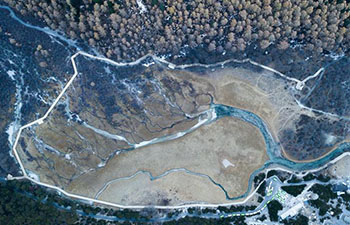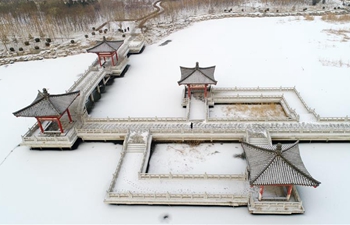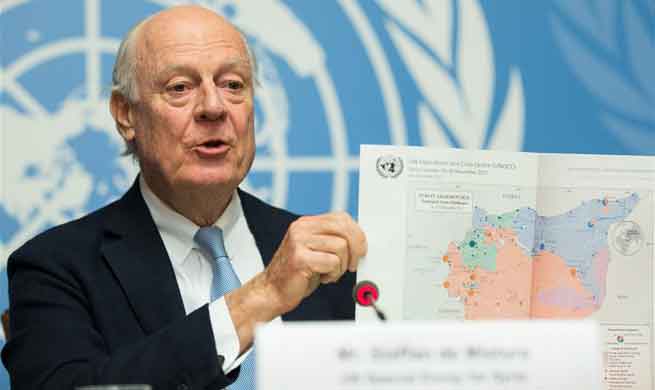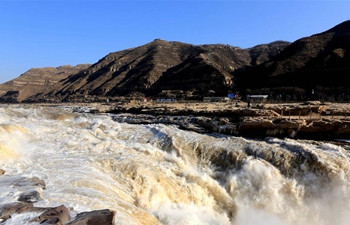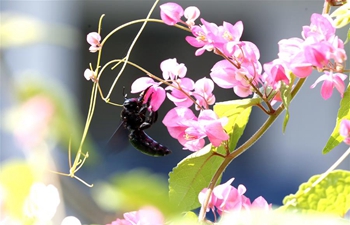By Xinhua writers Wang Chenxi, Hu Yao
MACAO, Dec. 15 (Xinhua) -- Walking on the jogging trail circling Colina da Guia, the highest hill on the Macao peninsula, tourists would probably be surprised to find that the hill, once covered in rich and varied vegetation, now has fewer trees and thinner grass on its southeastern slope.
This is an evidence of Typhoon Hato's rampage on Aug. 23, when gusts of more than 120 km per hour battered China's Macao Special Administrative Region (SAR) from the east and south.
Locals, however, have remained optimistic. "The situation was much worse four months ago and now things have returned normal, the trees will flourish again," said Lim, a middle-aged teacher who often walks around Colina da Guia for exercise.
On Aug. 23, the Macao Meteorological and Geophysical Bureau raised its typhoon warning to the highest - Signal No.10 - at 11:30 local time (0330 GMT), marking the first time that Signal No.10 was issued since the return of Macao to China and the strongest typhoon to hit Macao since 1964.
Hato made landfall in Macao's neighboring city of Zhuhai in southern China's Guangdong Province at noon the same day and after a few hours had claimed the lives of 10 people in Macao and injured more than 240 others. Macao sustained a loss of 11.5 billion patacas (about 1.42 billion U.S. dollars).
Shortly after the weakening of the storm, all public departments of the SAR government had mobilized for disaster relief, such as resuming power and water supplies, draining flooded streets and organizing traffic.
At the request of the Macao SAR government and under the approval of China's central government in accordance with the Basic Law of the Macao SAR and the Garrison Law of the Macao SAR, soldiers from People's Liberation Army (PLA) Garrison in Macao came to flooded districts to help clean the streets. It was the first time that PLA soldiers carried out such mission in either Macao or Hong Kong SARs.
More food and disaster relief supplies were also sent from Zhuhai by Guangdong Province.
Typhoon-ravaged Macao's full recovery was a lengthy process. The people of Macao and public servants continued cleaning, repairing and rebuilding for months after Hato's rampage.
The Macao Civic and Municipal Affairs Bureau repaired and reopened 109 parks before the end of September by moving 13,400 fallen trees and clearing 34,700 tons of twigs and leaves.
The Macao SAR government issued relief policies and subsidies for residents, flooded shops and small-and medium-sized enterprises, worth 1.76 billion patacas (about 219 million U.S. dollars), according to Chief Executive Chui Sai On in the Policy Address for Fiscal Year 2018.
As a world-renown tourist destination, Macao's recovery was first evidenced by tourist visits and income.
According to the Statistics and Census Service, Macao's visitor arrivals in September 2017 increased by 2.4 percent year on year, with overnight visitors rising by 5.4 percent and guests of Macao's hotels and guesthouses in the same period increased on year by 3.2 percent to 1,047,000.
The Macao Tourism Office said the SAR welcomed a total of 920,631 visitors during the eight-day Golden Week holiday period in October 2017, and the total visitor arrivals from Oct. 1-7 registered an 11.6 percent increase on year.
The International Monetary Fund (IMF) in October 2017 also raised its forecasts of Macao's economic growth in 2018 to 7.0 percent from a previous forecast of 1.7 percent.
Macao's exhibition industry also recovered soon after the impact of Typhoon Hato. The 13th edition of the annual report on the Trade Fair Industry in Asia, issued by the Global Association of the Exhibition Industry, ranked Macao as the most outstanding exhibition market in Asia in September 2017.
In the third quarter of 2017, a total of 304 meetings and exhibitions were held, with visitor arrivals reaching 581,000, according to Macao's Statistics and Census Service.
Above all, the SAR government has been committed to improving its disaster prevention and relief ability in the long-term, and to enhancing its cooperation with the Chinese mainland in these areas.
After the strick of Typhoon Hato, at the invitation of Chief Executive Chui Sai On, a team of experts from the National Commission for Disaster Reduction came to Macao twice to help review and provide suggestions on Macao's disaster prevention and relief work.
During their stay in Macao, the experts visited the hardest-hit regions, talked with local residents and local experts, and held work symposiums with related government departments.
Their suggestions and advise provided valuable knowledge for the SAR government, which was in dire need of such information for improving its own disaster prevention and relief capabilities.
In mid-November, when delivering his Policy Address for the Fiscal Year 2018, Chui Sai On said that the SAR government would make a 10-year plan for Macao's disaster prevention and relief work from next year.
In the short-term, the SAR government will improve its flood control and drainage infrastructure, as well as its ability to supply electricity, water and telecommunication services in case of emergencies.
In the long-term, it will enhance its planning for infrastructure construction, such as underground pipelines and windproof designs for high-rise buildings. It will also set up an information publishing platform, and train more meteorological personnel.
The SAR government will also seek to strengthen its cooperation with the Chinese mainland on disaster prevention and relief work, Chui said.





